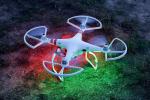
NUTRIRICE Operational Group: Optimizing nutritional efficiency in Doñana rice fields through the use of beneficial mechanisms
- Type Operational group
- Status In progress
- Execution 2023 -2025
- Assigned Budget 297.186,00 €
- Scope Autonómico
- Autonomous community Andalucía
The NutriRice project focuses on improving the nutritional efficiency of rice crops through the use of beneficial microorganisms, specifically nitrogen-fixing cyanobacteria. Expected outcomes include increased rice yield, improved soil health, and a reduction in the use of synthetic fertilizers. Initial results indicate a significant positive impact on crop productivity and long-term soil sustainability.
The main practical recommendation is the integration of biofertilizers, such as cyanobacteria, into traditional agricultural practices. For farmers, this represents an opportunity to reduce fertilization costs and minimize environmental impact, while maintaining or increasing crop yields.
Furthermore, this method promotes sustainable agriculture by naturally improving soil structure and nutrient availability. Producers can benefit from the scalability of this technology, which can be applied to different types of crops with minimal modifications to current farming systems. The project's innovation offers a cost-effective and environmentally friendly solution to the challenges of modern agriculture.
The project includes a documentary analysis of rice crop agronomic management, preparation of biofertilizer strains, seed impregnation with biofertilizers, and a study of the biofertilizing capacity of different microbial strains under field conditions. This includes detailed monitoring of crop phenology and production to evaluate the efficacy of the microbial strains.
NutriRice addresses the challenge of feeding a growing global population while preserving biodiversity through efficient resource management and reduced agricultural inputs.
The project operates within legislative and market-based drivers aimed at improving rice productivity and developing sustainable solutions to ensure food security amid the impacts of climate change and water-related challenges.
The main objective of NutriRice is to reduce the use of synthetic nitrogen fertilizers in rice cultivation by applying microorganisms with biofertilizing activity.
This project seeks to increase the efficiency of soil nutrients and irrigation water by incorporating previously isolated microorganisms, thereby reducing the need for chemical fertilizers and improving sustainability, while also improving soil fertility and reducing greenhouse gas emissions.
Expected results include increased rice yield, improved soil health, and a reduction in the use of synthetic fertilizers. Initial results indicate a significant positive impact on crop productivity and long-term soil sustainability.
- Coordinator/entity name: Vicente Mariscal Romero - IBVF CSIC
- Postal address: Americo Vespucio Avenue, 49, 41720
- Coordinator/entity email: VICENTE.MARISCAL@IBVF.CSIC.ES
- Telephone: 615652024
The NutriRice project is aligned with national and regional European Union guidelines and Spanish environmental legislation, which promote sustainable agricultural practices and reduce dependence on chemical fertilizers. In Andalusia, specifically, it is supported under the Rural Development Programme (RDP), partly funded by the European Agricultural Fund for Rural Development (EAFRD).
This program seeks to improve the competitiveness of the agricultural sector, ensure the sustainable management of natural resources, and promote a low-carbon economy. NutriRice contributes to these goals by implementing biofertilizers that improve nitrogen use efficiency and reduce environmental pollution in the Guadalquivir marshes, a critical area for both agriculture and biodiversity conservation. NutriRice's success could serve as a model for future sustainable agriculture initiatives in similar regions. However, it faces challenges, such as farmer acceptance of new technologies and the need to demonstrate the economic viability of biofertilizers compared to conventional methods.
Additional research would be advisable to optimize the formulation and application of biofertilizers and ensure their effectiveness under different environmental conditions. It is also crucial to involve consumers and stakeholders in the process, providing transparent information about the environmental benefits and quality of rice produced using these sustainable methods.
- VICENTE MARISCAL ROMERO - IBVF CSIC
- VICENTE MARISCAL ROMERO - IBVF CSIC (VICENTE.MARISCAL@IBVF.CSIC.ES)
- ARROCES SOSTENIBLES DE DOÑANA (carmenrocio@apiasd.com)
- DOÑARROZ, S.L. (myriam@alvaropallares.es)
- RAFAEL MORALES FABRA (rafael@conesbal.com)
- VICENTE MARISCAL ROMERO - IBVF CSIC






